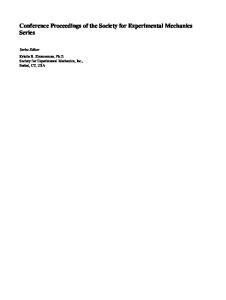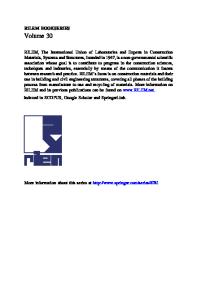Nonlinear Galerkin finite element methods for fourth-order Bi-flux diffusion model with nonlinear reaction term
- PDF / 687,798 Bytes
- 16 Pages / 439.37 x 666.142 pts Page_size
- 54 Downloads / 373 Views
Nonlinear Galerkin finite element methods for fourth-order Bi-flux diffusion model with nonlinear reaction term Maosheng Jiang1 · Luiz Bevilacqua2,5 · Jiang Zhu3 · Xijun Yu4 Received: 21 December 2018 / Revised: 5 February 2020 / Accepted: 16 April 2020 © SBMAC - Sociedade Brasileira de Matemática Aplicada e Computacional 2020
Abstract A fourth-order diffusion model is presented with a nonlinear reaction term to simulate some special chemical and biological phenomenon. To obtain the solutions to those problems, the nonlinear Galerkin finite element method under the framework of the Hermite polynomial function for the spatial domain is utilized. The Euler backward difference method is used to solve the equation in the temporal domain. Subject to the Dirichlet and Navier boundary conditions, the numerical experiments for Bi-flux Fisher–Kolmogorov model present excellent convergence, accuracy and acceleration behavior. Also, the numerical solutions to the Biflux Gray–Scott model, subject to no flux boundary conditions, show excellent convergence, accuracy and symmetry. Keywords Bi-flux diffusion · Reaction diffusion · Nonlinear Galerkin method · Hermite element · Numerical experiments Mathematics Subject Classification 65M60
Communicated by Abimael Loula.
B
Luiz Bevilacqua [email protected] Maosheng Jiang [email protected] Jiang Zhu [email protected] Xijun Yu [email protected]
1
School of Mathematics and Statistics, Qingdao University, Qingdao 266071, China
2
Alberto Luiz Coimbra Institute Graduate School of Engineering (COPPE), Federal University of Rio de Janeiro, Rio de Janeiro, Brazil
3
Laboratório Nacional de Computação Científica, MCTIC, Avenida Getúlio Vargas 333, Petrópolis, RJ 25651-075, Brazil
4
Laboratory of Computational Physics, Institute of Applied Physics and Computational Mathematics, Beijing 100088, China
5
Institute for Advanced Studies, University of São Paulo, São Paulo, Brazil 0123456789().: V,-vol
123
143
Page 2 of 16
M. Jiang et al.
1 Introduction The Bi-flux approach to diffusion problems has been recently proposed, using a discrete formulation (Bevilacqua et al. 2011, 2013, 2016; Jiang et al. 2018), to deal with peculiar evolution processes. The theory leads to the bifurcation of the flux into two distinct streams corresponding to two independent potentials. The first stream derives from the classical Fick’s potential and the secondary stream derives from a new potential. The theory leads to the fourth-order equation: ∂q = β DΔq − β(1 − β)RΔ(Δq). ∂t
(1.1)
Together with D which is the classical diffusion coefficient, two new coefficients were introduced, namely R which is called the reactive coefficient and β which is the fraction of particles displacing according to the Fick’s law. Note that the value of β varies from 0 to 1. If β is equal to one, the model reduces to the classical diffusion model. If β is equal to zero, the solution corresponds to a stationary condition q(x, t) = constant. In this paper, we introduce a reaction term to the fourth-order Bi-flux Eq. (1.1)
Data Loading...











